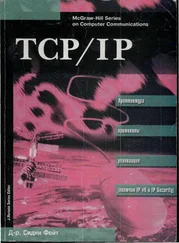Much protocol research is problem-driven, but there are still deep questions. How much can we get out of formal methods, for example? And how do we manage the tension between the principle that robust protocols are generally those in which everything is completely specified and checked and the system engineering principle that a good specification should not overconstrain the implementer?
Research papers on security protocols are scattered fairly widely throughout the literature. For the historical background you might read the original Needham-Schroeder paper [1428], the Burrows-Abadi-Needham authentication logic [352], papers on protocol robustness [2, 113] and a survey paper by Anderson and Needham [114]. Beyond that, there are many papers scattered around a wide range of conferences; you might also start by studying the protocols used in a specific application area, such as payments, which we cover in more detail in Part 2. As for remote key entry and other security issues around cars, a good starting point is a tech report by Charlie Miller and Chris Valasek on how to hack a Jeep Cherokee [1318].
1 1 With garage doors it's even worse. A common chip is the Princeton PT2262, which uses 12 tri-state pins to encode or 531,441 address codes. However implementers often don't read the data sheet carefully enough to understand tri-state inputs and treat them as binary instead, getting . Many of them only use eight inputs, as the other four are on the other side of the chip. And as the chip has no retry-lockout logic, an attacker can cycle through the combinations quickly and open your garage door after attempts on average. Twelve years after I noted these problems in the second edition of this book, the chip has not been withdrawn. It's now also sold for home security systems and for the remote control of toys.
2 2 We'll go into this in more detail in section 5.3.1.2where we discuss the birthday theorem in probability theory.
3 3 There are some applications where universal master keys are inevitable, such as in communicating with a heart pacemaker – where a cardiologist may need to tweak the pacemaker of any patient who walks in, regardless of where it was first fitted, and regardless of whether the network's up – so the vendor puts the same key in all its equipment. Another example is the subscriber smartcard in a satellite-TV set-top box, which we'll discuss later. But they often result in a break-once-run-anywhere (BORA) attack. To install universal master keys in valuable assets like cars in a way that facilitated theft and without even using proper tamper-resistant chips to protect them was an egregious error.
4 4 To be fair this was not due solely to relay attacks, as about half of the high-value thefts seem to involve connecting a car theft kit to the onboard diagnostic port under the glove box. As it happens, the authentication protocols used on the CAN bus inside the vehicle are also vulnerable in a number of ways [893]. Updating these protocols will take many years because of the huge industry investment.
5 5 And don't forget: you also have to check that the intruder didn't just reflect your own challenge back at you. You must be able to remember or recognise your own messages!
ZHQM ZMGM ZMFM
– G JULIUS CAESAR
KXJEY UREBE ZWEHE WRYTU HEYFS KREHE GOYFI WTTTU OLKSY CAJPO BOTEI ZONTX BYBWT GONEY CUZWR GDSON SXBOU YWRHE BAAHY USEDQ
– JOHN F KENNEDY
Cryptography is where security engineering meets mathematics. It gives us the tools that underlie most modern security protocols. It is the key technology for protecting distributed systems, yet it is surprisingly hard to do right. As we've already seen in Chapter 4, “Protocols,” cryptography has often been used to protect the wrong things, or to protect them in the wrong way. Unfortunately, the available crypto tools aren't always very usable.
But no security engineer can ignore cryptology. A medical friend once told me that while she was young, she worked overseas in a country where, for economic reasons, they'd shortened their medical degrees and concentrated on producing specialists as quickly as possible. One day, a patient who'd had both kidneys removed and was awaiting a transplant needed her dialysis shunt redone. The surgeon sent the patient back from the theater on the grounds that there was no urinalysis on file. It just didn't occur to him that a patient with no kidneys couldn't produce any urine.
Just as a doctor needs to understand physiology as well as surgery, so a security engineer needs to be familiar with at least the basics of crypto (and much else). There are, broadly speaking, three levels at which one can approach crypto. The first consists of the underlying intuitions; the second of the mathematics that we use to clarify these intuitions, provide security proofs where possible and tidy up the constructions that cause the most confusion; and the third is the cryptographic engineering – the tools we commonly use, and the experience of what can go wrong with them. In this chapter, I assume you have no training in crypto and set out to explain the basic intuitions. I illustrate them with engineering, and sketch enough of the mathematics to help give you access to the literature when you need it. One reason you need some crypto know-how is that many common constructions are confusing, and many tools offer unsafe defaults. For example, Microsoft's Crypto API (CAPI) nudges engineers to use electronic codebook mode; by the end of this chapter you should understand what that is, why it's bad, and what you should do instead.
Many crypto textbooks assume that their readers are pure maths graduates, so let me start off with non-mathematical definitions. Cryptography refers to the science and art of designing ciphers; cryptanalysis to the science and art of breaking them; while cryptology , often shortened to just crypto, is the study of both. The input to an encryption process is commonly called the plaintext or cleartext , and the output the ciphertext . Thereafter, things get somewhat more complicated. There are a number of basic building blocks, such as block ciphers , stream ciphers , and hash functions . Block ciphers may either have one key for both encryption and decryption, in which case they're called shared-key (also secret-key or symmetric ), or have separate keys for encryption and decryption, in which case they're called public-key or asymmetric . A digital signature scheme is a special type of asymmetric crypto primitive.
I will first give some historical examples to illustrate the basic concepts. I'll then fine-tune definitions by introducing the security models that cryptologists use, including perfect secrecy, concrete security, indistinguishability and the random oracle model. Finally, I'll show how the more important cryptographic algorithms actually work, and how they can be used to protect data. En route, I'll give examples of how people broke weak ciphers, and weak constructions using strong ciphers.
5.2 Historical background
Suetonius tells us that Julius Caesar enciphered his dispatches by writing ‘D’ for ‘A’, ‘E’ for ‘B’ and so on [1847]. When Augustus Caesar ascended the throne, he changed the imperial cipher system so that ‘C’ was now written for ‘A’, ‘D’ for ‘B’ etcetera. In modern terminology, we would say that he changed the key from ‘D’ to ‘C’ . Remarkably, a similar code was used by Bernardo Provenzano, allegedly the capo di tutti capi of the Sicilian mafia, who wrote ‘4’ for ‘a’, ‘5’ for ‘b’ and so on. This led directly to his capture by the Italian police in 2006 after they intercepted and deciphered some of his messages [1538].
Читать дальше











